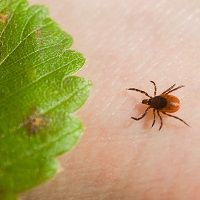Article
Ticks' Migration Linked to Changes in Disease Prevalence
Author(s):
A 15-year analysis of ticks has shown a change in their migration patterns, which was linked to fluctuating disease risks.

A 15-year analysis of ticks has shown a change in their migration patterns, which was linked to fluctuating disease risks.
For their study, Keith Clay, Professor at Indiana University (IU) Bloomington College of Arts and Sciences' Department of Biology, and his colleagues analyzed the microbiome of dog ticks (n=68), or Dermacentor variabilis and black-legged deer ticks (n=15), or Ixodes scapularis, in addition to taking the blood of their hosts, the white-footed mice.
According to an IU statement, the ticks were taken out of their natural habitat because they are difficult to maintain in laboratory settings.
Using a method called high-throughput sequencing, the investigators discovered that ticks had a microbiome rich in pathogens, including Bartonella. However, the team also found that ticks had plenty of organisms, called symbionts, that didn’t affect humans and were more geared towards their survival.
“Overall, bacterial communities from each sample type were significantly different and highly structured, independent of their dominant operational taxonomic units (OTUs). Our results point to complex microbial assemblages inhabiting ticks and host blood including infectious agents, tick-specific endosymbionts and environmental bacteria that could potentially affect arthropod-vectored disease dynamics,” the authors reported.
Due to a variation in ticks’ migration and microbiome, Clay urged for the creation of better tools to forecast outbreaks of tick-borne diseases.
"The medical field doesn't really have a great handle on tick-borne diseases in some ways because the diagnostic tests aren't very accurate," Clay said. "The lone star tick, for example, carries a pathogen that's closely related to Lyme disease. It's not Lyme disease, but there's a good chance our current tests will turn up positive for it," Clay noted.
Nevertheless, Clay commented that while proactive antibiotic treatment will combat a majority of tick-borne diseases, assessing their true danger to humans is difficult without adequate methods to follow them.





